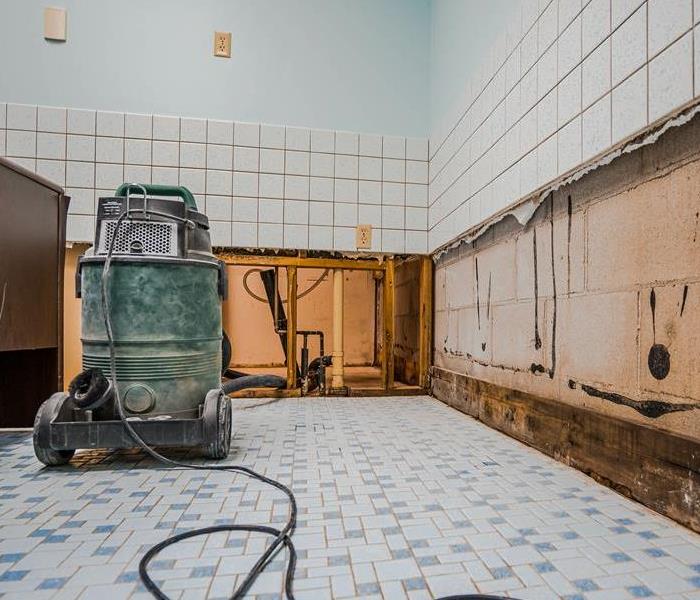The Role of Technology in Commercial Water Loss Mitigation
3/11/2024 (Permalink)
In today's digital age, technology plays a pivotal role in every aspect of our lives, including commercial water loss mitigation. As a restoration and mitigation company, embracing technology is essential for staying competitive and providing efficient services. Our team of experts have put together a comprehensive list of ways that technology is changing our industry so that we can serve our customers better.
Advanced Monitoring Systems
One of the most significant advancements in water loss mitigation is the use of advanced monitoring systems. These systems allow for real-time monitoring of commercial properties, helping to detect water leaks and other issues promptly. Some key technologies include:
Smart Leak Detection Sensors: These sensors are strategically placed in areas prone to water leaks, such as near pipes, water heaters, and appliances. When they detect moisture, they send alerts to property managers or restoration companies, allowing for rapid response.
Building Automation Systems (BAS): BAS can integrate with water detection systems to automate responses. For example, if a leak is detected, BAS can shut off the water supply to prevent further damage.
Remote Monitoring Apps: Property managers and restoration companies can use mobile apps to remotely monitor a property's environmental conditions, including temperature and humidity. This helps in early leak detection and reduces the risk of mold growth.
Advanced Drying Equipment
Technology has also improved the equipment used in commercial water loss mitigation. Modern drying equipment is not only more efficient but also environmentally friendly. Some of these innovations include:
Desiccant Dehumidifiers: These dehumidifiers use desiccant materials to absorb moisture from the air. They are highly effective in drying out large commercial spaces and are energy efficient.
Thermal Imaging Cameras: These cameras help identify hidden pockets of moisture by capturing temperature variations. This technology ensures that no moisture is left behind during the drying process.
Moisture Meters: Advanced moisture meters provide accurate readings of moisture levels in building materials, allowing for precise drying strategies.
Data Analytics and Reporting
Technology enables restoration companies to collect and analyze data, providing valuable insights to both the company and the property owner. Key features of data analytics in commercial water loss mitigation include:
Historical Data Analysis: We can analyze historical data to identify recurring issues, enabling property owners to take preventive measures.
Customized Reports: Our team can generate detailed reports for property owners, insurance companies, and regulators. These reports can include information on the extent of the damage, the mitigation process, and the cost of restoration.
Predictive Analytics: Some systems use predictive analytics to forecast potential water damage events, allowing property owners to proactively address issues before they become significant problems.
In conclusion, technology is revolutionizing the commercial water loss mitigation industry. Restoration and mitigation companies that embrace these technological advancements can offer faster response times, more efficient mitigation processes, and better communication with clients. By staying at the forefront of technology, we can provide top-notch services and help property owners protect their investments from water damage.

 24/7 Emergency Service
24/7 Emergency Service
